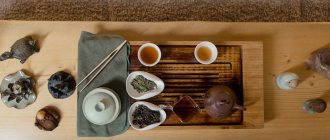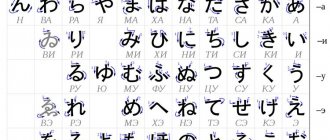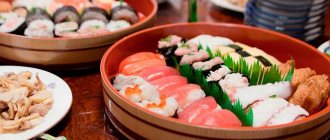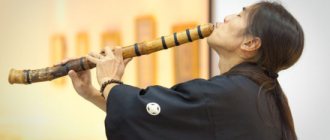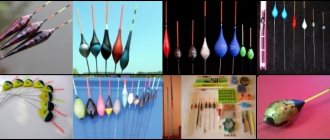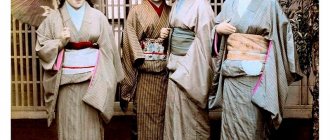History of the ritual
The traditions of drinking tea began to take shape in the 7th-8th centuries, when tea leaves were imported from China. Initially, tea was consumed by monks during meditation. As Buddhism spread, tea grew in popularity throughout Japan.
By the 13th century, tea was consumed not only by the highest nobility, but also by commoners. Tea drinking then was a modest, measured conversation in the company of loved ones. The more ritualistic use of tea again arose thanks to the monks. One of the first to lay the foundations of the ceremony was the monk Dayo.
Subsequently, a great contribution to the development of the ceremony was made by Murata Juko, who formed the basic rules of tea drinking and determined the need for a tea house.
In the 16th century, the ceremony was further refined by tea master Sen no Rikyu, who formalized the etiquette and added a garden and stone path to the ceremony. Due to disagreements with the ruler Sen no Rikyu had to commit suicide, but his principles spread throughout the country. By the 18th century, the rules for the ceremony were finalized and were no longer changed.
The most popular varieties of Japanese tea
Japanese green tea has a rich history and is produced in accordance with traditions that have developed over many centuries. He is given the best territories on the islands of the Land of the Rising Sun. Therefore, varieties of Japanese tea are famous for their richness of taste and ability to improve the health of the human body.
Matcha
The symbol of Japan for more than 1000 years has been green powdered matcha tea, which residents of the Land of the Rising Sun not only brew and drink, but also use as an additive to dishes, considering it the No. 1 health product.
Japanese matcha tea is a thick green drink. It is prepared from dried green tea leaves ground using special equipment.
Leaves for matcha tea are collected in the spring only in the morning. Before harvesting, the bushes are shaded, which causes amino acids to accumulate in the plant, which can give the brewed drink sweetness and softness. The raw materials are dried in ventilated areas, in natural conditions, which is why the maximum amount of useful substances is retained.
You can prepare matcha tea as follows:
- Tea powder is sifted through a sieve made from natural materials: wood, flax, clay.
- The water is boiled and cooled to 80 degrees.
- Fill a level teaspoon with 70 ml of hot water and whisk until lightly foamed so that there are no lumps.
IMPORTANT: Matcha tea is best brewed in clay or porcelain containers.
Scientists have found that the amount of amino acids, antioxidants and vitamins in 1 cup of matcha tea is equal to the amount of nutrients in 10 cups of traditional green tea. And its ability to alkalize the body helps maintain health, rejuvenate cells and stimulate the human immune system.
Sencha
One of the most popular hot drinks in Japan is sencha loose leaf tea, cultivated since the 13th century. The twisted thin leaves of this type of tea look like pine needles - to the Japanese they resemble spider legs. Processed only with steam, yellow-green tea has an exquisite taste with unobtrusive astringency and a subtle aroma.
Sencha tea contains a complex of vitamins and minerals, which makes it very beneficial for humans.
All the beneficial properties of the drink will be revealed only if it is brewed correctly.
Cooking method:
- The teapot is poured with boiling water to warm it up.
- The water is boiled and cooled to 80 degrees.
- Place tea in the brewing vessel (1 tsp leaves per 200 ml) and fill with hot water.
- Everything is infused for 30 seconds, then the water is drained.
- The leaves are poured a second time with hot water and infused for 1 minute.
This tea is brewed no more than 3-4 times and consumed both hot and cold.
IMPORTANT: Sencha tea should be brewed in filtered water and porcelain containers.
This tea can cause allergies, so it should not be drunk by children, pregnant or lactating women, or those suffering from hypotension.
Hodzicha
Hojicha green tea breaks all stereotypes. When brewed, it has a red-brown color, a nutty taste and a caramel aroma.
Tea acquires its properties gradually:
- when growing this variety, tea bushes are not shaded, as a result the taste becomes sharper;
- After steaming, rolling and drying, the leaves are “fried” in a porcelain bowl over charcoal.
Hojicha reveals its aroma and beneficial properties during brewing.
- Dry tea is placed in a glass or porcelain teapot (3-4 tsp - per 350-400 ml) and filled with hot water (90 degrees).
- Everything is infused for 10-15 seconds, after which the liquid is drained.
- The tea leaf is steeped again with hot water for 45 seconds.
Japanese hojicha tea should be brewed no more than 7 times, increasing the time of each brew by 10 seconds.
IMPORTANT: Hojicha tea has minimal caffeine content, so you can drink it before bed.
The Japanese take it as a means to lower sugar and cholesterol levels.
Kokeicha
Kokeicha tea is used to prepare a drink and as an additive to bread, dairy products, ice cream, and marinades for meat and fish. It is even used instead of tooth powder. It can not only balance the taste of products, but also enrich them with calcium and iodine.
The basis of Japanese kokeicha tea is tea leaves with mature three-year-old stems, steamed with seaweed. During the production process, the raw materials are ground and pressed, giving them the appearance of small sticks.
Brewed kokeicha tea has a light green hue, a herbaceous aroma reminiscent of spring freshness, a light creamy nutty taste with a subtle bitterness and a long, salty aftertaste.
Brewing recommendations:
- The brewing vessel is heated with boiling water.
- Spring or purified water is heated to 80-90 degrees.
- Dry tea base is poured with hot water and infused for 1-2 minutes.
There is no need to drain the water after the first brew. The tea leaves should be used 3-4 times, each time increasing the infusion time by no more than 15-20 seconds, otherwise bitterness will appear.
Kokeicha tea gives vital energy, reduces stomach acidity, normalizes the functioning of the thyroid gland, strengthens the walls of blood vessels, and acts on the body as a general tonic.
Gyokuro
The Japanese call gyokuro tea “the drink of geniuses” because it improves memory, stimulates brain processes and activates creativity.
Thanks to its excellent taste, gyokuro competes with the best Indian and Chinese varieties and is one of the most expensive teas.
It is grown in hot and rainy climates, it must be shaded 20 days before harvesting the raw materials, steamed to preserve color and steamed with seaweed to enrich it with useful substances. Dry tea leaves are very similar to spruce needles.
Brewed gyokuro has a yellow-green hue, a mild sweetish taste with notes of fresh herbs and sea wind.
You need to know how to prepare gyokuro tea correctly:
- The kettle and cups are heated with boiling water.
- Soft, purified water is boiled and cooled to 50-70 degrees.
- 8-10 grams of tea is poured into 150 ml of hot water and infused for at least 3 minutes.
The tea is brewed 3-4 times.
Refreshing gyokuro tea is prepared in a cold way: 7 grams of tea base is poured with 300 ml of water and infused for 3 hours.
This drink has no contraindications.
Kukicha
Japanese kukicha tea, the “cure-all” tea, is very popular because it contains little caffeine and high calcium (more than cow's milk).
It is made from fermented petioles and twigs of the tea bush, collected in the fall or winter.
After brewing, the tea acquires a rich, sweetish, nutty taste and delicate aroma.
Kukicha tea brewing process:
- Soft water is boiled and poured into cups to warm them.
- Place tea in the teapot (2 tsp per 150 ml).
- Hot, but slightly cooled water (80 degrees) is poured from the cups into the kettle.
- Everything is infused for 1 minute.
When pouring tea into cups, do not try to fill each one at once. It is best to pour a little into everything - this will achieve an equal concentration of tea in all cups.
Kamairicha
Kamairicha tea is grown in the southern prefectures of Japan and processed using the ancient technology of “killing greens” - drying in a kama pot.
Brewed, it acquires an unobtrusive roasted taste with notes of kamak (iron cauldron) and loses its herbal aroma.
Method for brewing Kamairicha tea:
- Pour 2 tsp. with a slide in a heated kettle 150-200 ml of hot water (80 degrees).
- Leave for 40 seconds.
This tea should not be brewed more than 3 times. With each subsequent brewing, the water temperature is brought to 90-100 degrees.
Philosophy and special meaning
Once upon a time, tea drinking was carried out very luxuriously, but monks and tea masters followed the path of simplification, seeking to derive pleasure not from external, but from internal beauty. Murata Juko formulated the following principles of tea drinking, which are strictly observed to this day:
- harmony;
- respectfulness;
- purity;
- peace.
An important feature of the ceremony is its location. In addition to a special tea house, a garden and a stone path are required for the ritual. The entire environment should be simple, quiet and calm to conform to the concepts of Buddhism.
In general, the meaning of the Japanese ceremony is to enjoy simple aesthetics, leisurely conversation, and the taste and aroma of tea.
Types of ceremonies in Japan
Over many centuries, a large number of types of ceremony have developed in Japan, but some of the most common ones stand out among them:
- Night ceremony. Usually begins at moonrise, at 22-23 pm and continues until 4 am.
- Tea drinking at sunrise. Conducted from 3-4 to 6 am, ideal for relaxation and meditation;
- Morning ritual. Most often it occurs in the summer, starting at 5-6 o’clock in the morning, when the air is still cool and fresh.
- Afternoon ceremony. It starts at one o'clock in the afternoon after all participants have been treated to lunch.
- Evening ritual. It runs from 6 pm until sunset.
- Special tea ceremony. Held when celebrating any special events.
In addition to the above, there are other ceremonies, for example, a ritual during the winter solstice, or a meeting of a tea master with his students.
The video clip will tell you in detail about the Japanese tea ceremony, which has strict rules and is a kind of ritual.
Guest choice
The host of the ceremony is in charge of selecting the guests. The most important thing for him is to determine the most honorable participant. This person must know the traditions of the tea ceremony and all the rules for its implementation. The main guest is an example for the rest of the participants.
He is notified of the ceremony at least a week in advance. After this, he gives his consent or refuses to participate in this action. The main guest, together with the host, is involved in selecting the remaining participants. The organizer of the ceremony sends him a list from which five people must be selected, or discusses this issue in a personal meeting. Once ceremony participants have been selected, invitations are sent to everyone. Today, the telephone is used for these purposes. Previously, everything was much more complex and more sophisticated. In response, each guest was obliged to personally visit the organizer of the holiday or send him a letter of gratitude.
Place of the ritual
The Japanese ceremony must be held in a specially designated place. As a rule, this requires a small plot of land with a garden and a tea house. There are no strict rules for their location, but all elements must be harmoniously combined with nature.
Tyaniva
A small tea garden, which is often made to look like a mountainside overgrown with trees. Typically, such a garden contains pine trees, cypress trees, and other coniferous plants. For decorations, stones of different shapes and sizes, as well as old lanterns, are allowed. All details should be selected in the most natural way to resemble natural unkemptness and at the same time create an atmosphere of calm and serenity.
Lanterns in the garden serve not only for decoration, but also to illuminate the path when drinking tea at night. It is important that the light of the lanterns does not attract much attention. It should be soft and subdued, just enough to see the contours of the road.
Rodzi
Inside the garden there is a stone path leading to the tea house. All roji stones are uncut and laid out randomly enough to in no way resemble a man-made pavement. The path should be as similar as possible to a path in the mountains. When a participant in the ceremony steps on the roji, he is immersed in a special state of concentration and at the same time forgets about his problems outside the garden.
As you approach the house, immersion in inner reverie and detachment from worldly concerns should increase.
Chashitsu
The tea house is a simple small building that should not distract from tea drinking. As a rule, chashitsu consists of one room, inside which there are 6-8 windows located quite high. It is important that the view from the windows does not attract the attention of those present.
Chashitsu has a low and narrow entrance. Historically, this was necessary to prevent samurai warriors from entering the teahouse with weapons. In addition, such an entrance forces everyone who enters to bow, regardless of their position and status.
The furnishings of the house are simple and ascetic: there are tatami mats on the floor, a fireplace for making tea is located in the center, and there should be a special niche or shelf on the wall - a tokonoma. On this shelf are placed incense, a special arrangement of flowers and a scroll with a saying appropriate for the occasion of the ceremony. All interior elements should be in harmony with each other and create a special atmosphere.
Tyaniva
The garden area, as a rule, is modestly small, which allows the maintenance staff to constantly maintain it in perfect condition. A tea garden always imitates some area of wild nature, with its inherent natural disorder, which is accurately played out by diligent Japanese craftsmen.
The flora of the tea garden is represented mostly by evergreen shrubs and trees, bamboo, cypresses, and pines. Among the moss-covered “wild” stones, ancient lanterns, barely noticeable against the general background, have quieted down, illuminating with a dim, soft light that will not interfere with concentration, the path to the tea house - roji, in the dark.
Dishes and accessories for the ceremony
Like other elements of the ceremony, the dishes should be pleasantly combined with each other. At the same time, it is not necessary for it to look the same, only a certain similarity is important, in which not a single item stands out from the general series.
The following items are required for tea drinking:
- chabako – a box for storing tea;
- traction – containers for heating water;
- chavan - a large bowl of tea, which is served to all guests during the first circle;
- hishaku, or chavan - small bowls for each guest;
- chasaka - a bamboo spoon for pouring tea;
- Kobukusa is a cloth used to serve cups of tea.
It is better if the teaware is simple and old, which has been passed down from generation to generation for many years. It is usually made of wood, copper or bamboo, and undecorated ceramics are acceptable for bowls.
Each item must be clean, but at the same time not washed to a shine. Ideally, the dishes bear traces of time, nobly darkening from prolonged use.
Tea utensils
All utensils necessary for preparing a tea drink do not necessarily have to be decorated in a single artistic style, but must be of the same type, representing a single ensemble. In addition, a mandatory requirement for each utensil is its venerable age, which is characterized by centuries-old darkening and scratches, while being impeccably clean. Unlike Europeans, who love to polish their cups and spoons until they look like new, the Japanese value the spirit of times gone by in every bowl, cup and spoon.
Among the utensils, the following must be presented: a small box for storing dry tea raw materials, a cauldron for heating water or a tetsyubin teapot made of pure copper, a bowl for communal drinking or separate clay cups for each of the guests, having a rough, unprocessed appearance, several spoons and a stirrer made from bamboo.
Ceremony stages: brief description
Participants are invited to the tea ceremony in advance, usually the number of guests is 5 people without the tea master. Clothes should be dull and plain; silk kimonos are best.
Before the ceremony begins, all participants are gathered in a special pavilion, where the details of the ritual are announced. Then the guests enter the garden and walk along the stone path. Passing through the tyaniva is necessary for the participants to tune in to a special mood, renounce their problems and worries, and begin to admire simple natural elements, bringing their consciousness into harmony.
At the entrance to the chasitsa, the master greets guests, after which ritual washing of hands and face is carried out using a special well located next to the house.
Next, all participants go into chaos, finally renouncing the world around them. The low entrance forces everyone to bow, symbolizing the equality of all present. Shoes should be left at the doorstep.
The master places a vat of water on the fireplace, and meanwhile the guests are offered small light snacks to satisfy their hunger. After the treats, guests are taken back to the garden and taken on a leisurely walk.
When the water in the vat boils, the guests are called back to the house, and the master begins to prepare tea from powdered matcha. Participants must silently follow this process, observing the confident and smooth movements of the master.
Thick tea prepared in chawan is passed around. Each guest should take a sip and pass it to the other, which emphasizes trust and equality between all participants in the ceremony.
Next, the master prepares a thinner tea, which is poured into individual chawans. Guests slowly drink tea, enjoying its taste and light, calm conversation.
At the end of the tea party, the master gets up, apologizes and leaves the house. The guests chat leisurely and enjoy the peace for a while longer, after which they disperse. The master subsequently returns and restores order to the chasitsu, finally completing the previous tea ceremony.
Rules and traditions
The Japanese call what happens during the ceremony “chanyu”. This is a kind of performance in which all the roles are written in advance, and objects, gestures, words, aromas and music are filled with specific content.
Here are some rules and traditions that the master and guests should not neglect:
- there should be no more than 5 people invited;
- there is a special dress code that foreign guests are allowed to violate, since they do not have a kimono, but long skirts for women and wide trousers (not jeans) for men are encouraged;
- shoes are left outside the door, people walk on the tatami in white socks;
- put watches and jewelry in their purses so that they do not distract from the sacrament taking place;
- The “snack” that precedes tea drinking (the Japanese call it “kaiseki”) usually consists of soup, fish, rice, potatoes, seasonings; guests may be offered sake;
- in the absence of chairs, one should sit on one’s knees or (for men) in Turkish style; stretching one’s legs is prohibited by the ritual;
- the guest brings with him a handkerchief without a pattern (to wipe his face and hands after ablution), pieces of paper (to put sweets on them), a fan (when it is placed next to the cup, they limit personal space, but if it is put away behind the back, it means they are ready communicate with those gathered), the host will prepare all this paraphernalia for foreign guests.
Tea schools in Japan
In modern Japan, there are more than 50 schools that teach not only how to make tea, but also introduce the philosophy of Buddhism, which is extremely important for immersion in the mystery of ritual.
The most honorable schools are the institutions that were once founded by the master Sen no Rikyu himself. As a sign of family kinship, all schools have the particle “Sen” in their name:
- Sansenke – basic school;
- Urasenke is the largest school;
- Omotesenke is the second largest and youngest school.
Representative offices of tea schools are located in 20 countries, including Russia.
How does the Japanese tea ceremony differ from the Chinese one?
Japan and China are countries where tea is treated with great respect, and therefore tea ceremonies have a special order. In both the Japanese and Chinese traditions, a lot of attention is paid to the type of tea, dishes, and method of preparation.
The difference is that the Chinese ceremony is more informal, a friendly conversation where the emphasis is on the art of brewing tea.
The Japanese tea ceremony is aimed at the internal state and purification of consciousness; it places special demands on the behavior of guests, the decoration of the environment, and ritual actions.
The Way of Tea
The Japanese tea ceremony is called “sado” or “chado” and means “way of tea”, “tea art”. And this is not an exaggeration at all - in order to master the art, future masters study for a long time, comprehend all the subtleties associated with tea.
The tea ceremony is a traditional Japanese ritual that is distinguished by its extraordinary aesthetics and complexity. It can be called a sacrament that occurs between participants, a special form of communication and unity of souls.
While drinking tea, people enjoy the aesthetics of the world around them, talk leisurely, relax and are filled with harmony. The ritual takes place in a special room and follows strict rules that have remained unchanged for many centuries.
Today in Japan there are more than fifty large schools teaching the art of the tea ceremony. They have spread throughout the world - they have representative offices in twenty countries, including Russia.
The tradition of drinking tea came to Japanese lands from the mainland, or more precisely, from China, where people from time immemorial appreciated the tart taste of the drink and grew entire plantations. But while the people of China put the principles of the Confucian religion into the ritual, the Japanese identified it with Buddhism, so the ceremonies here took place simply, naturally, in a calm atmosphere.
Japanese ritual tea drinking adheres to several rules:
- respect and mutual respect between guests and the master;
- a sense of harmony in everything: both in the objects used and in the attitude of the characters;
- calm, serene mood;
- pure thoughts, actions, sensations.
